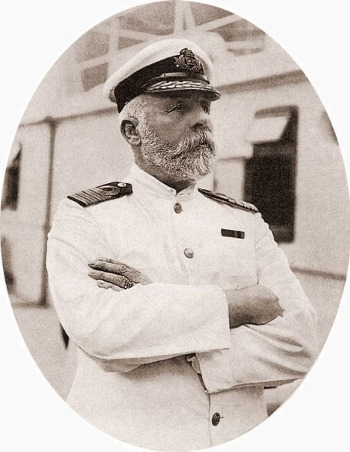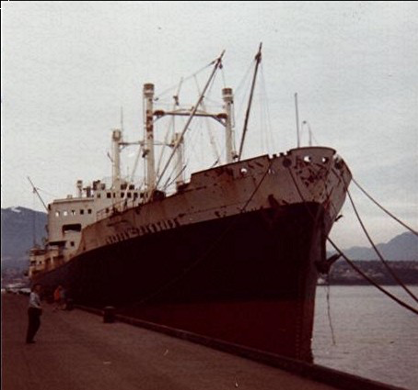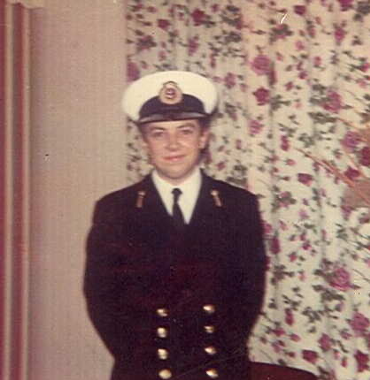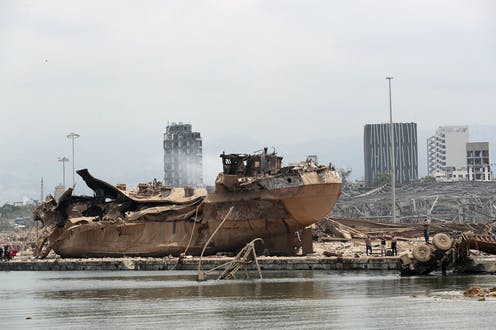by Rev. David Reid MA FNI
Many mariners compare the role of the captain on board a ship to a supreme being – the ultimate authority. On a merchant ship, there is no rank or qualification of captain. Instead, this is the master mariner. In the 2020 movie Greyhound, Tom Hanks plays the captain of a US Navy destroyer on convoy duty in the North Atlantic during World War II. The burden of command is very much on display when Hanks takes evasive action to protect the convoy of merchant ships from the prowling threat of German submarines. Hanks wrote the screenplay based on the novel The Good Shepherd by C.S. Forester. Greyhound illustrates the loneliness of command and is an accurate portrayal.
On a merchant ship, the ultimate authority on board for all matters rests with the master. When in uniform, they wear four gold stripes on the arms of their jacket or the epaulets on each shoulder.
Ever since the Vikings set forth across the oceans, there has always been a hierarchal command structure led by a single individual. The Norwegian Gulating law dating back to the 11th century prescribed the role and duties of the styrimaõr, the skipper or master of a longship. The structure of manning on a merchant ship has evolved and adapted to meet the demands of the technological evolution from wind power to propellers driven by engines. Under sail, the ship’s compliment revolved around the management of sails and navigation; thus, seamanship was the primary focus – the role of engineers and radio were yet to be.

The safe navigation of a ship requires round-the-clock attention, and the navigation team consisting of the deck officers divides the day into periods of duty known as a watch. They are also referred to as watchkeepers. Typically, merchant ships operate on a 3-watch system, each watch lasting 4 hours and repeating twice in 24 hours. The chief mate takes the 4-8 watch, the second mate the 12-4 watch, and the third mate (the most junior) the 8-12. The watch system allows the master to oversee the watch of the most junior mate during hours that are convenient to the master.
To serve as a mate requires training and qualifications that certify that individual’s competency to perform the tasks. To become a mate involves a combination of academic and practical training through a cadetship program. During the time serving as a cadet, the individual gains experience through mentoring and hands-on learning. A navigating cadet is the starting point for eventually rising to the four stripes worn by the master and being in command.
Not all cadets will become a master, and the mathematics are such that this is not possible. Some find that they are content to remain serving as a mate. The burden of responsibility that comes with the four stripes is not for everyone. Others serve at sea for a limited period of time and then seek employment ashore because they desire to enjoy an everyday life that does not require long periods spent working away from home. The effect of this natural attrition is that those who have both aspiration and aptitude rise steadily through the hierarchal system and eventually become appointed to serve as master – thereby earning their four stripes. The timeline for this process is governed by statutory periods of sea time served and takes at least seven years and often longer.
****
The 19th century brought about the technological revolution from sail to propeller. The arrival of steam boilers, engines, and all the associated equipment introduced a new department onboard the engineering department. In the earliest stages, this involved manual labor to shovel coal into boilers, but over time, as innovation evolved, the task of operating the propulsion became more efficient. Nevertheless, the engine room also required around-the-clock attention, and so the engineers were initially organized as watchkeepers in a mirror image of the mates. The professional engineers required academic training and qualifications, and they performed the task of managing the stokers, oilers, wipers, and fitters.
Automation in the engine room has since changed the need for a physical presence and has reduced the level of manning needed. Instead, the engineers are on call to respond to alarms and otherwise they work a day watch. The leader of the engineers has the title of chief engineer and wears four stripes, but since 1865, they have an additional purple stripe that differentiates them from the master. The chief engineer reports directly to the master and, in many respects, is equivalent to the chief mate since they are both heads of departments. The career path for a chief engineer also commences with an engineering cadetship like the deck cadetship that leads to master.
The deck and engineering departments are the two principal departments onboard a ship with the master in command and the chief mate and chief engineer reporting directly. However, another department also reports to the master, and that is the catering department. Some might argue that the catering department is the real engine that keeps everyone sustained at sea. The task of keeping the entire ship’s complement fed and healthy rests with the smallest department that often may only consist of a cook and a messman.
Meals need to be ready on time to match the watchkeeper’s schedules, and the food has to be nutritious and in line with the minimum victualling requirements and the ship manager’s budget. The ordering and taking on of provisions and stores at each port of call requires forward planning and knowledge of the availability in the countries where the ship is trading. Once the ship sets off, there is no opportunity to run to a convenience store, so the business of provisioning requires perfect planning so that nothing runs out mid-voyage.
The ship’s complement is a hierarchal structure that consists of its leader, the master, and the two department heads, the chief mate and chief engineer. Within each department, the mates and engineers make up the deck and engineer officers. At the next level in each department, we have the ratings; these are skilled and less-skilled persons who make up the team required to run the ship. On the deck side, the senior rating is the Bo’sun (Boatswain), a skilled seaman who is the team leader managing the ordinary seamen and deckhands. The term rating evolved from the classification or rating of crew members who served below the officers, they were rated by their level of competence. They perform essential tasks such as handling mooring ropes at berthing, setting the pilot ladder, rigging the gangway, and manually steering the ship under pilotage. In port, they act as security on the gangway watch. They also undertake numerous maintenance and repair tasks. They are also the team that will launch a lifeboat or deal with a fire on board. On the engineering side, the team is smaller due to automation and may consist of technicians and fitters performing routine maintenance and repairs.
Technology eliminated the radio department, often known as ‘sparks’ or the ‘Marconi man. The radio officer held a crucial position in the era of morse code communication. The arrival of satellites eliminated the need for transmission via the morse code key and, along with it, the individual that operated that key.
Merchant Navy uniforms became the fashion for British merchant mariners after World War I; this followed the recognition bestowed by King George V and the title of “Merchant Navy” in honor of the service given by the commercial merchant shipping during the Great War. During World War I, 3,000 British merchant ships went down with the loss of 15,000 merchant seamen.
****

I first went to sea as a navigating cadet in November of 1968; I had to fly to Houston, Texas, to join my first ship, the London Prestige.
I was under the misguided impression that I was required to wear my uniform while traveling to join my ship. I boarded my transatlantic flight to New York at London Heathrow, fully attired in my dress blues and cap.

As I boarded that BOAC plane (the predecessor to British Airways), the flight attendant asked me if I worked for the airline; apparently, my uniform was similar to that of BOAC. I found my seat, and within a few minutes, there was a tap on my shoulder, and a man not in uniform asked me if I was joining the London Prestige. I was surprised, “How could he know?” Then I realized that my uniform was the giveaway. That was the first and only time that I joined a ship in uniform…
The hierarchal structure on board a ship is universal irrespective of flag state or crew nationality. Indeed, the system functions on a multi-national basis, often bringing together a master, officers, and ratings of multiple nations who work together in a collaborative environment. The chain of command sets in place clear lines of responsibility and authority and is essential for the safety of all on board. No matter the flag, port of registry, or classification society, when the pilot steps on board, it will always be the person with four stripes that welcomes the pilot to the bridge.
Image: Seamen’s Church Institute (Flikr)





